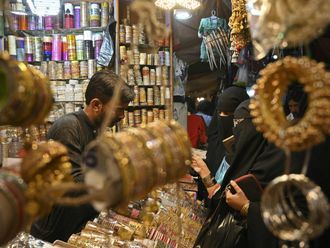ISLAMABAD: A recent survey by the Nutrition Wing of the Ministry of National Health Services (NHS) has cautioned the government against increasing number of stunted children (from six months to 24 months) due to poor food fortification and lack of awareness on the part of the parents.
The survey findings have revealed that nearly 80 per cent of Pakistani children in the above age group are not having a balanced diet and thus remain underfed and don’t register proper growth.
According to the findings, more than half of infants do not receive solid, semi-solid or soft food during the recommended period, while just 22 per cent of them up to the age of two receive a diet that meets the minimum standards of dietary diversity — of four or more food groups out of seven.
In Pakistan, the last national nutrition survey was held in 2011 and health experts, particularly those in the field of children’s health have called for a new survey so that future policy may be devised in the light of its findings.
“The survey, which was held across the country for almost six months, shows that children do not get sufficient proteins, carbohydrates, vitamins and other important elements of a diet,” said an official of the health ministry.
According to the survey, affordability is the main problem in accessing a nutritious diet, as fruit, eggs and meat are out of reach for most of the population due to high prices and Vitamin B12, vitamin A, calcium and iron are hardly available in local foods.
“We looked at the cost of diets across the country and it the cost of a nutritious diet ranges between Rs104,000 to Rs171,300 (Dh3,103 to Dh5,111) annually per household,” the NHS official said.
The consumption patterns in Pakistani society are unlikely to change unless household incomes increase and the availability of major food items in the market is not an issue.
“We have suggested four major steps to address the issue. Poor families should be given vitamins on the community level, the breastfeeding ordinance needs to be implemented and it should be mentioned on formula milk that it is not an alternative to mother’s milk,” said the official of the nutrition wing.
Some of the measures suggested by the wing to the government include: food fortification to be done through flour and oil by including vitamins A and D and folic acid; bio-diversification, as some varieties of wheat have zinc and folic acid; provision of food baskets to the poor through the Benazir Income Support Programme, and above all, allocation of funds for each district to fight the issue of stunting among children.
A ministry official said it was suggested to the Prime Minister’s Office that an average of Rs400 million would be needed to be spent on a district with a population of one million every year.
“The percentage of stunted children can be reduced by 15 to 20 per cent if Rs400m is spent on a population of one million continuously for four years,” he said.
According to the National Complementary Feeding Assessment report, the survey was conducted in 17 livelihood zones in 12 districts across four provinces. It was commissioned by Unicef Pakistan with funding from the United Kingdom’s Department for International Development.
The study found that the recommended intakes of energy, protein, fat, all nine vitamins and four minerals can be met using foods available in the local market unless restricted by economic constraints and cultural practices.
Very poor and poor households cannot afford a nutritious diet in almost all livelihood zones given their current level of income.
The main recommendations given in the recently correspondence are that dietary modification is needed to improve the quality, composition and affordability of a nutritious diet. Cheap nutritious options should be promoted, as should self-production of some crops and vegetables and cow, buffalo and goat milk to improve the quality, composition and affordability of a nutritious diet.












